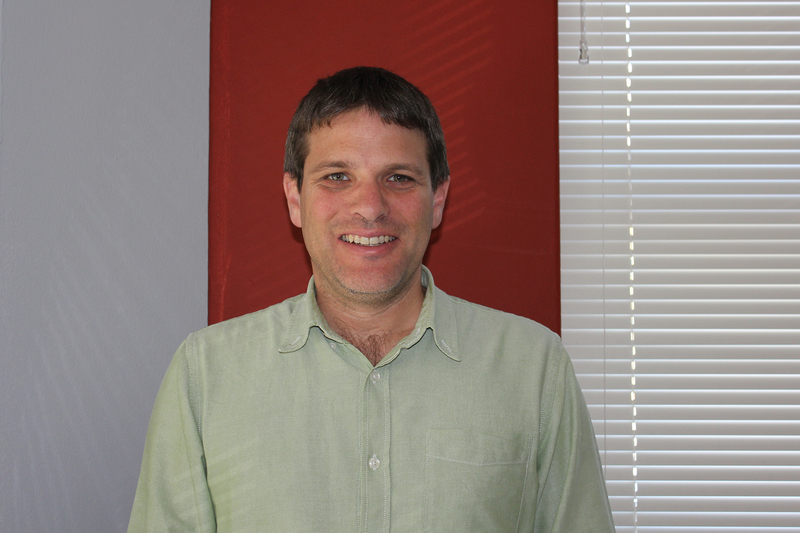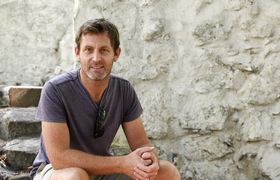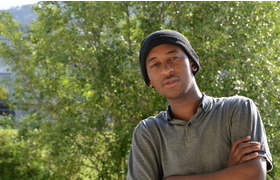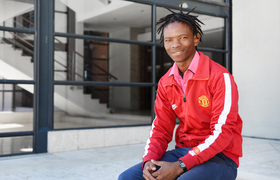Simulating an epidemic
04 April 2018 | Story Ambre Nicolson. Photo Supplied. Read time 6 min.
Nathan Geffen is a computer scientist, a journalist and the founder of GroundUp . He is now also the recipient of a PhD from the University of Cape Town (UCT) on the ways in which mathematical models have been used to understand the HIV epidemic.
“You have to consider before committing to a PhD whether you really want to pursue a career in academia,” he says. “If the answer is no, then you should think twice.
“A PhD is hard work. It is intellectually challenging, but harder still is the grind, the volume of work required. Not to mention some of the archaic rituals that surround the process. It can be a lonely experience.”
Sage advice from a man who has already enjoyed several careers: as a computer scientist in a corporate setting, a leading voice in HIV advocacy group the Treatment Action Campaign (TAC), the creator of a media platform for human rights journalism and, on the side, one of the people behind a website dedicated to debunking spurious medical claims made by drug manufacturers.
Doing vital work
Geffen was born and bred in Bellville in Cape Town’s northern suburbs. After high school he completed his undergraduate studies in computer science at UCT before spending some time in Toronto, Canada.
“Toronto is a lovely place,” says Geffen, “but when I returned to South Africa I wanted to feel that I was making a contribution here. I had always been interested in politics and when I came across the work of the TAC around 2000 it was obvious that it was an organisation that was doing vital work.”
At first Geffen worked part-time for the TAC but soon he was dedicating all his time to the organisation.
“I had the chance to work with excellent researchers like Dr Leigh Johnson and Professor Rob Dorrington who were doing fascinating work on how you create models for an epidemic. It was at this point that I first applied my knowledge of computer science to HIV modelling.”
He remembers it as a tough but fulfilling period.
“We were waging a war against government policies that were causing the unnecessary deaths of hundreds of thousands of people,” he recalls. “In the end though, we won. Today, four million people take ARVs [antiretroviral medication] every day in this country. In South Africa I think it is likely that we may have the biggest chronic disease public health programme in the world.”
Geffen acknowledges that UCT researchers such as Johnson, Dorrington and professors Nicoli Nattrass and Andrew Boulle, and many others, played an important role in understanding HIV epidemiology and influencing public policy at the time.
Media and modelling
By 2013 he had stepped down as TAC treasurer.
“By that time I had already started GroundUp and I felt it was a conflict of interest.”
Geffen and others had identified the need for a media platform that reported on human rights stories as early as 2007. In his mind such a platform would always be designed to produce articles that could be republished in the mainstream press.
The result was GroundUp, which now goes by the tagline “news that matters” and describes itself as a news agency that offers stories for republication, mostly under a creative commons licence.
“Around 2012, as Ground Up was finding its feet, I also started thinking about returning to my interest in mathematical models and how they have been applied to HIV,” he says.
How models influence policy
Geffen’s PhD thesis has two components.
“The second bit is technical,” he says. “It’s an analysis of several algorithms that can be used for speeding up and improving the quality of simulations of the HIV epidemic and other sexually transmitted infections [STIs].”
He explains that mathematical models of STIs often need to account for the diversity, or heterogeneity, of human sexual behaviour and that microsimulations are a type of model well suited to accounting for this heterogeneity.
“The other part of my thesis is about how modelling has influenced policy decisions in the past.”
As an example, Geffen describes a longstanding debate about when people living with HIV should start ARV treatment.
“Should they start as soon as they have been diagnosed as HIV positive or should they start later, when their CD4 cell count drops below a specific level?”
In the past the medical guidelines governing this have fluctuated wildly.
According to Geffen the most cited model that influenced these decisions was published in 2009 in The Lancet medical journal. It argued for people to start treatment immediately, with some plausability. But it wasn’t until a 2015 clinical study was completed that it was proved that starting ARVs at the time of diagnosis has the best health outcomes for people living with HIV.
“This is an example of how modelling can influence policy. It is a fascinating subject because, in contrast to the ridiculous debate over whether HIV causes AIDS, for example, this was a highly rational debate between experts acting on sound evidence but reaching different views.
“It attests to both the limits of modelling and its importance in understanding how something is working,” he says.
Geffen’s PhD has already resulted in three papers being published, one with a German collaborator that he met online after posting a blog about his work.
“I hope to publish further papers too,” he says, “but now that the PhD is done I am going to take a break to focus my attention on GroundUp, for now at least.”
 This work is licensed under a Creative Commons Attribution-NoDerivatives 4.0 International License.
This work is licensed under a Creative Commons Attribution-NoDerivatives 4.0 International License.
Please view the republishing articles page for more information.










